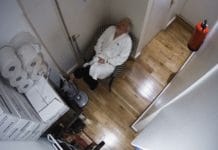
A study of Tor ‘hidden services’ websites conducted at the University of Portsmouth has discovered that even though child-abuse material makes up only 2% of the estimated 45,000 hidden services websites online at any point in time on the dark net, it accounts for about 83% of visits to such websites.
According to the study, number of child pornography websites is over five times as many as any of the other categories of content investigated in the Dark Web survey such as gambling websites, propaganda sites, bitcoin-related sites or anonymous whistle-blowing.
Researcher Dr Gareth Owen analyzed Internet traffic to sites using Tor’s technology to hide their addresses from search engines over a six-month period, in an attempt to understand what kind of sites were most popular.
Most of the sites were so explicit as to include the prefix “pedo” in their name. The researchers’ automated web crawler downloaded only text, not pictures, to avoid any illegal possession of child pornographic images or video.
#Darknet Is Full Of Criminals & Governments Giving #TOR A Bad Name http://t.co/LKS4TrBCGG pic.twitter.com/Oho2MJIPUq
— Philipp Hüwe (@donphilippo) September 22, 2015
Describing the scale of traffic to these sites as ‘a huge shock’, Owen told Wired, “Before we did this study, it was certainly my view that the dark net is a good thing, but it’s hampering the rights of children and creating a place where pedophiles can act with impunity.”
Owen also claimed that drug-related sites like Silk Road and Agora accounted for 24% of hidden service sites but 5% of overall traffic, while whistleblower sites like SecureDrop and Globaleaks are 5% of websites but less than a tenth of a percent of site visits.
Tor has questioned the accuracy of the study stressing that the figures may include visits to pedophilia websites from law enforcement and anti-abuse groups who patrol them to measure and track them, as well as denial of service attacks from hackers trying to take these websites down.
“We do not know the cause of the high hit count [to child abuse sites] and cannot say with any certainty that it corresponds with humans,” Owen admitted, adding that “caution is advised” when drawing conclusions about the study’s results.
Tor’s executive director Roger Dingledine added that Tor hidden services are important and have less worrying applications. “There are important uses for hidden services, such as when human rights activists use them to access Facebook or to blog anonymously. These uses for hidden services are new and have great potential,” he said.
Do the study’s findings suggest that Tor is overwhelmingly used for child abuse? While the results are debatable, Owen’s study does throw up new questions for Tor about how or whether it could help efforts to shut down pedophilia websites, identify their owners and block access to child-abuse material.
This Article (Study Finds Over 80% Of Tor Network Used For Pedophilia Sites) is free and open source. You have permission to republish this article under a Creative Commons license with attribution to the author and AnonHQ.com.





anyhow, lets take care about pedo´s ourselves, dont need any authority to keep deep web clean from BOTH
Horst i’m with you 100%,if this study is true then we have great pedo access that otherwise we wouldn’t have and they would still be lurking but somwhere else, for real not only on “dark web”